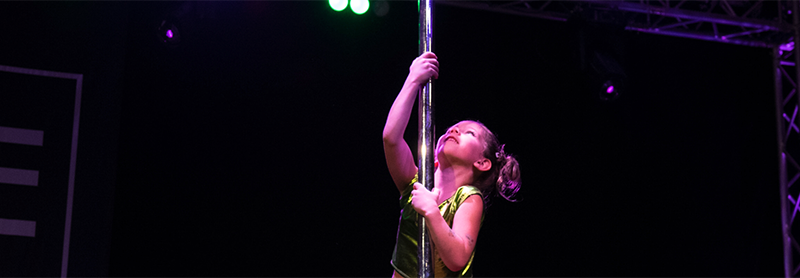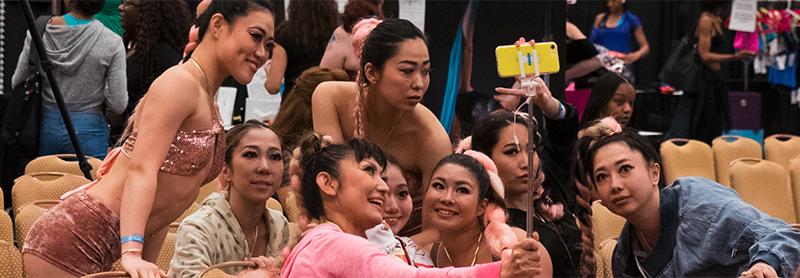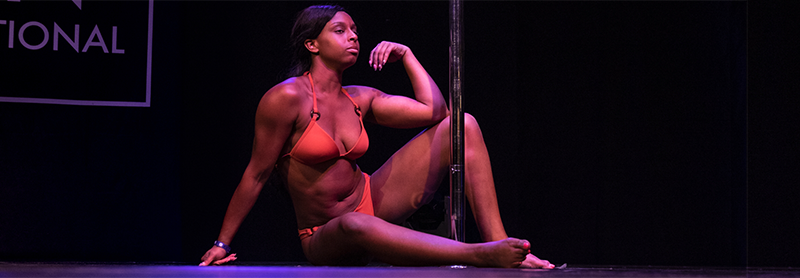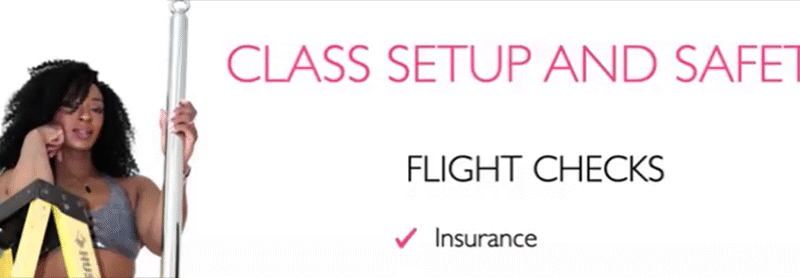Social media marketing may seem confusing and overwhelming sometimes. It is still a great way…

How to create a kid’s fitness (or competition) focused pole program
Pole dancing and kids can be a difficult topic in some parts of the world, while other parts of the world have thriving kids’ pole programs and sport-based competitions.
This post will give a general overview on what to think about when starting your own kid’s program.
Research your local market for kid’s art, fitness, or sports programming, first
Just like you would conduct research before opening your pole studio, do some basic market research to understand what kid’s part, fitness, or sports-based programming are available in your local area.
Ask questions like:
- Are there gyms that cater to kids or boutique-fitness options like kid’s yoga, dance, or gymnastics local to your studio?
- Are there active, kids summer camps in your area?
- What do kid’s programs typically charge? How are they structured?
- Are there lots of kids in your area or is it mostly retirees?
- Could you offer something unique in your market (that parents would pay for)?
- Could you partner with another organization to provide this programming?
The more information you can gather can help you decide if starting a kid’s pole program could be successful in your area.
Consider using a format tool like a SWOT analysis to help.
Focus on a specific age range
Kids grow up fast and have different needs during different parts of their development. Because of that, kids’ fitness-related programming should be geared toward specific age ranges.
There’s no right or wrong answer, just stay focused on an age-range that you and/or your instructors have experience with teaching.
Some ideas could be to have “Mommy/Daddy and me” classes that focus on toddler age kids poling with their parents. Or a 6-8 range that might focus on conditioning and technique building while still having fun. You may consider running gender-neutral or gender-specific classes.
Hire instructors with kid’s fitness experience
Teaching kids can be very different from teaching adults, especially at younger ages. Adults may benefit from more autonomy whereas kids may benefit from more structure and more breaks.
Hire instructors who have experience teaching in other related kid’s fitness such as circus, gymnastics, or dance if you can’t find any with specific kids pole experience. Make sure that all your instructors are proficient in child (not just adult) CPR and develop emergency action plans that consider kids not just adults.
Make sure to evaluate your instructors and your program regularly.
Make it a time-based program
While some pole studios focus on drop-in pole classes and others focus on semester-based pole classes for adults, make all your kids programming a specific time commitment like a summer program, 1-month, or 3-month program with classes always on the same day(s) and time(s).
This makes scheduling much easier for parents and helps you build a program that safely takes kids through a progressive conditioning, technique, and skill-building development (as relevant depending on the age range).
Schedule your kids’ classes away from your other pole classes
Just as you might schedule men-only classes, plus-size only classes, queer-only classes, or other unique classes for different segments of your studio’s population to better serve those demographics and make them feel more comfortable, try to schedule your kid’s classes away from your “sexy,” erotic, or heels-based classes. For parents who are not yet polers, they may not yet understand how pole can represent so many different styles to so many different types—and ages—of people.
Similarly, some of your regular polers may not appreciate having kids running around your waiting room, especially for those that don’t have children themselves or who are using their pole dancing class time as a respite from their children.
The goal in our industry is always to educate and inform all people about the many sides pole, not to slut-shame the stripper/sex worker founders of the pole industry, while providing options to make various demographics feel more included and seen.
Keep the parents involved
Many pole studios do not allow spectators for their classes, but your kids classes should absolutely welcome—and depending on the age range, require—parents to be present for classes. While this can be challenging for working parents looking for an activity for their child, it also helps keep the kids and the parents feeling safe with your teaching.
Provide parents with lots of specific information on what to expect during class, if they should attend class with their child or where they can wait during class, what to wear to class, and what safety measures you have in place including the use of appropriate crash mats.
Make your marketing unique and appropriate
Generally, if you are a sexy-focused pole studio, you may have more trouble selling your members or new members on the concept of kid’s programming. If you have a more fitness-focused or competition/sport-focused pole studio you will likely have an easier time making the leap to holding kid’s fitness programming.
Consider coordinating with other kid’s fitness-focused programming in your area like dance, circus, or gymnastics to offer complimentary classes, to share teaching resources, and for joint marketing opportunities. Also consider reaching out to the pole competitions that host kids pole events such as IPSF internationally, with links to country-level competitions as well as US Aerial Federation, American Pole League, and USPSF in the US to stay up-to-date on best practices and opportunities for kids to perform or compete. Our IPIA Partner, PoleCon, hosts a Youth Showcase that is not a competition, which can be less stressful for kids and parents.
If you are starting a kid’s pole program, focus on an age range you have experience teaching, keep the lines of communication with parents open, and adjust your programming and marketing based on constructive feedback. Teaching kids is one way that our industry will continue to grow!



